For decades, professional photographers have been using the pairing of a 70-200mm f/2.8 and a 300mm f/2.8 to achieve their telephoto goals. Canon introduced the RF 100-300mm f/2.8 L IS USM recently and it just about covers the range of both those lenses. But is it as good?
Canon RF 100-300mm f/2.8 L IS Review: How it Handles
A 300mm f/2.8 is a hefty but manageable prime lens so I figured that a 100-300mm would be a beast. Holding the lens in my hands, though, I was pleasantly surprised.
Weighing in at 5.84 pounds (2.65kg), the $9,500 RF 100-300mm f/2.8 L IS is only slightly heavier than the EF 300mm f/2.8. Given its extra versatility, this is still a very manageable weight and I was able to handhold it for most of the day without issue. Being an L series lens, the construction is lightweight but solid, with a fully weather-sealed design that can handle the toughest conditions. Plenty of customizable buttons adorn the front ring, followed by a custom control ring, manual focus, and quick-throwing zoom ring.
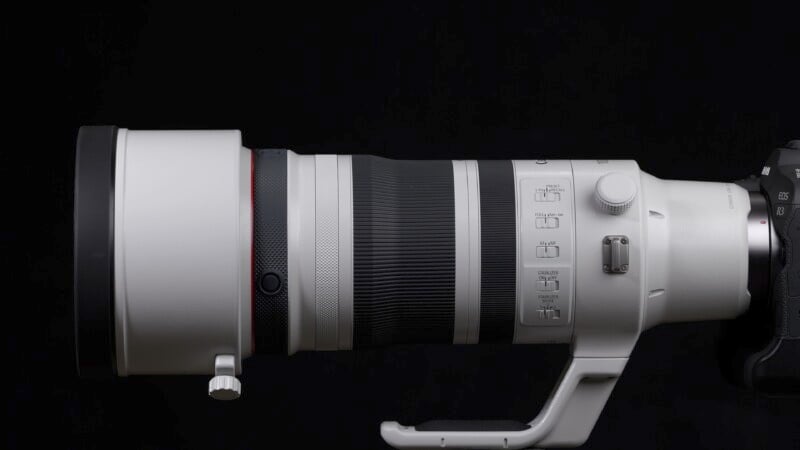

In a curious departure from typical designs, the Canon 100-300mm foregoes a drop-in filter setup, instead threading the front of the lens for 112mm filters. This setup saves weight but in the rare situation where you want to use a filter, the unusual 112mm size will be expensive and difficult to find.
The lens comes with built-in image stabilization rated to 5.5 stops. There is, of course, the usual control switch to set different IS modes, and the lens itself is very stable to shoot handheld.
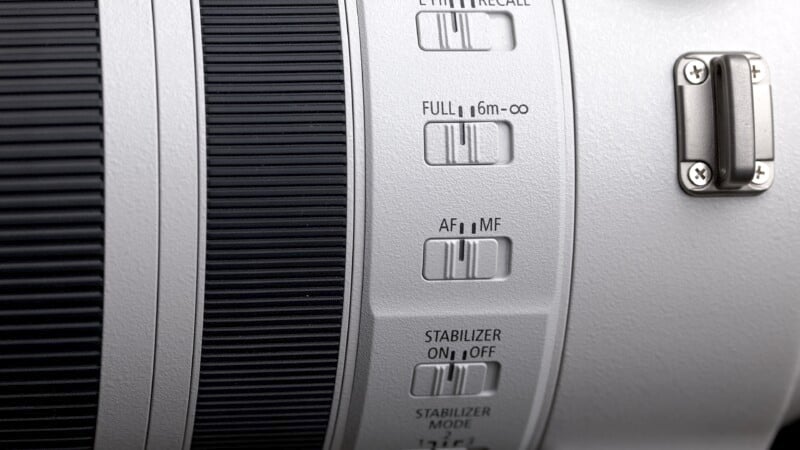
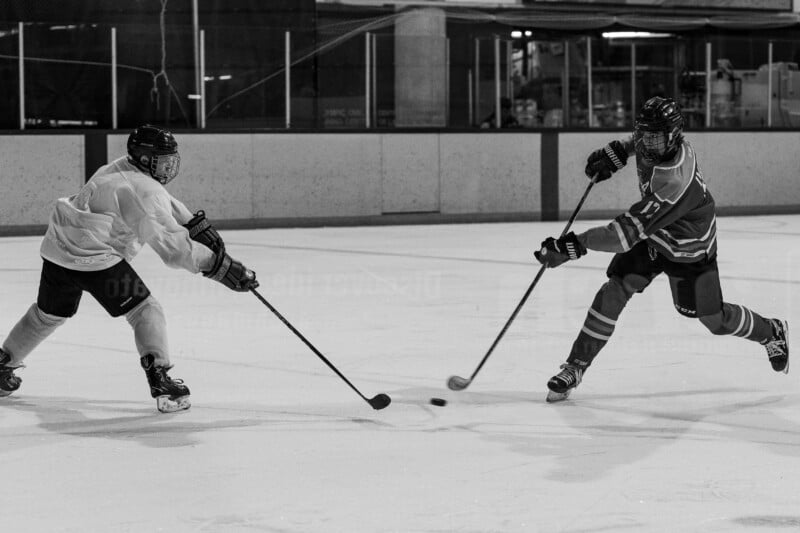
The tripod collar is nonremovable and unfortunately is not cut for Arca-style mounts. It does have the 90-degree click stops, which I like, but some others do not prefer. The padded handle leaves plenty of room for large, gloved hands and provides a secure way to carry the lens. I especially liked being able to place my palm under the tripod mount but still easily manipulate the zoom ring with my fingers. Thanks to the short zoom throw, I could go from 100mm to 300mm without having to take my hand away.
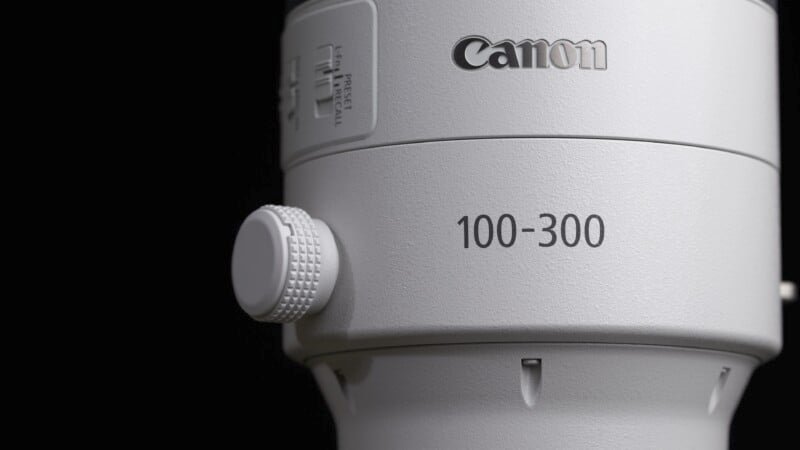
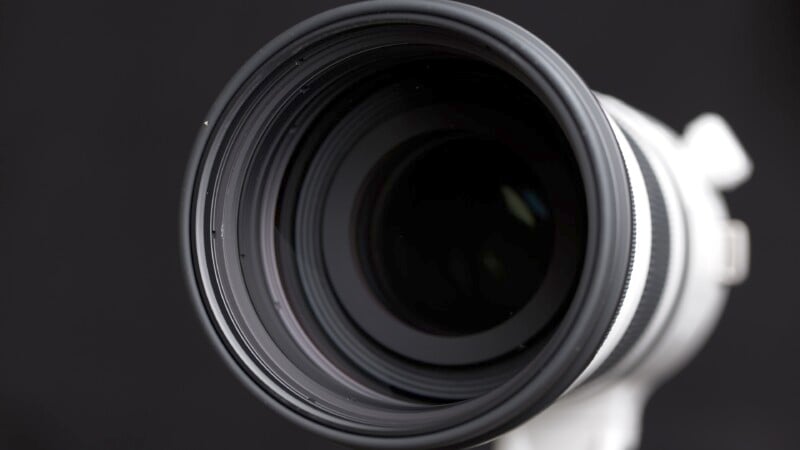
Although I didn’t have access to any teleconverters, the fast f/2.8 aperture easily allows for extra extension when you need it. A 2x converter combined with the 100-300mm would be extremely versatile for so many kinds of photography and yet still provide plenty of light to shoot with thanks to the optic’s f/2.8 aperture.
Canon RF 100-300mm f/2.8 L IS Review: How it Shoots
Canon employs twin nano USM motors which drive the lens silently and quickly. I used the 100-300mm on both a Canon R5 and R3, and both cameras focused accurately and quickly when combined with the lens. I wanted to push the lens in a low-light situation so I shot some beer league hockey and found the autofocusing to be precise and swift, even in poor light through plexiglass.

I’ve come to find that some of the modern RF lenses are prone to flare and ghosting so I came into this review with some concern. Gratefully, I pointed the lens towards some intensely bright flood lights and found no sign of ghosting and no real loss of contrast either. This is a great result, and the lens hood will also do a good job of blocking extraneous light.
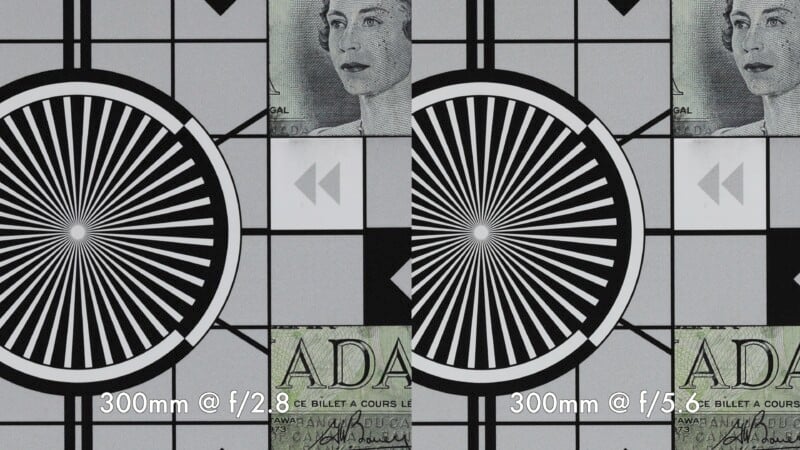
Fast telephotos can also be prone to LoCa, or longitudinal chromatic aberration, which causes a color cast to appear in out-of-focus areas of the image and is very hard to remove afterward. Luckily, the Canon 100-300mm is so well corrected that LoCa did not appear anywhere in the frame. This is a very well designed and corrected lens.

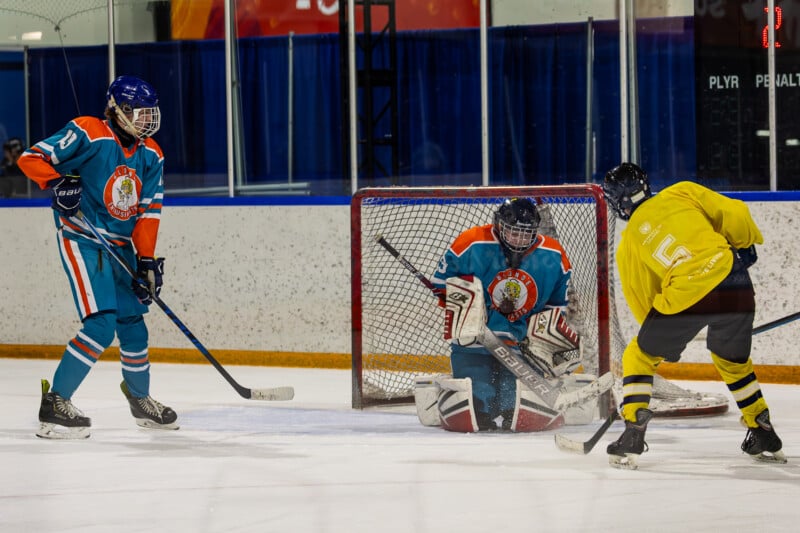
Now, an expensive lens like this needs to be sharp and the 100-300mm does not disappoint. The center sharpness at 100mm is exceptionally good at f/2.8 and the lens is flat shooting right to the corners. Stopping the lens down to f/5.6 really isn’t necessary unless you want some depth of field. At 300mm I feel the lens is even better and was basically ideal across the entire frame, wide open. This exceptional sharpness at 300mm also pays dividends with an attached teleconverter, where the level of detail can be largely maintained.

The 100-300mm will be a shallow depth of field master with its fast aperture and long telephoto range. The quality of the bokeh further supports this strength because it is smooth and beautiful. Specular highlights don’t show any onion rings or even a soap-bubble effect at all. There is some pleasant cat’s eye vignetting at f/2.8 and everything is round and smooth by f/5.6. Backgrounds are silky-smooth with no harshness or frenetic distractions. This lens will give pleasing backgrounds whether it be a mess of branches behind an animal, or a packed crowd at the next Olympics.
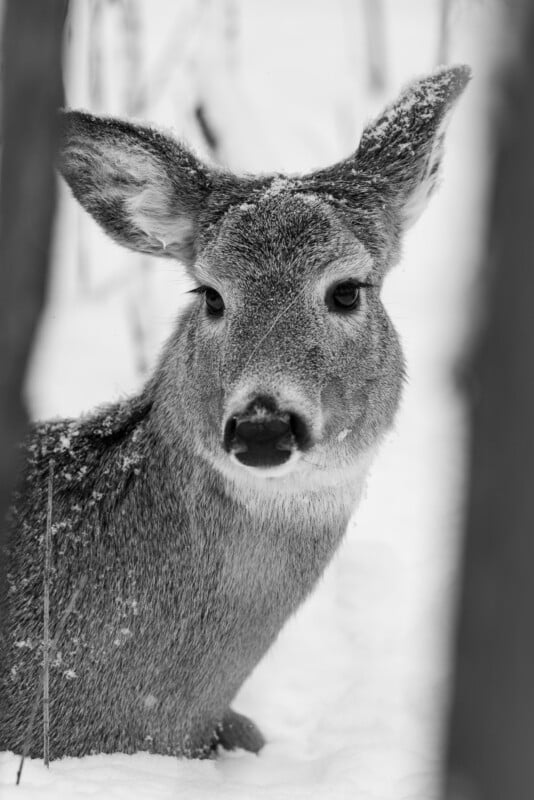
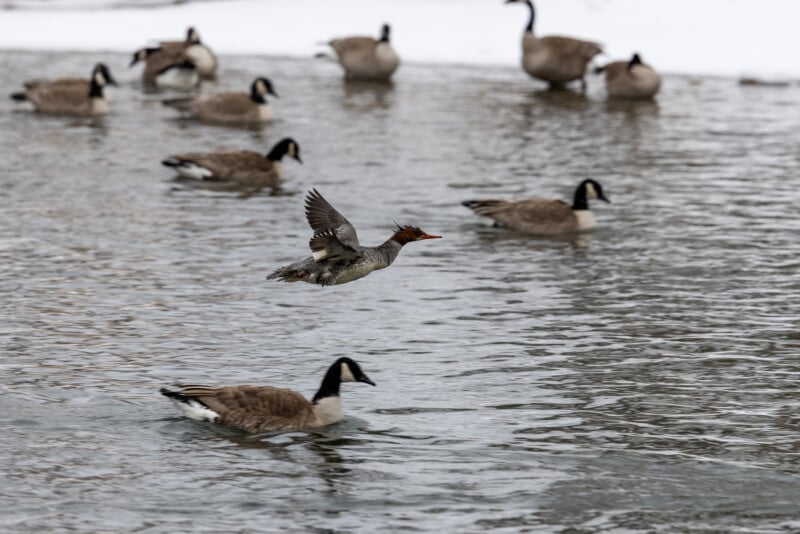
Canon RF 100-300mm f/2.8 L: Canon’s New Telephoto Workhorse
Canon has made an exceptionally good lens that we will most definitely see on the Olympic sidelines. I was most impressed by how lightweight it is considering its versatile zoom range.
Having a lens that can go from shooting distant athletes to immediately shooting head and shoulders portraits is very convenient and I believe this lens will be incredibly popular. However, this usefulness comes with a big price: $9,500. As a result, the Canon 100-300mm is going to be aimed mostly at news agencies, rental houses, and the wealthiest of enthusiasts or pros. For those lucky enough to use one, the experience will be very positive.
Are There Alternatives?
There really isn’t anything like this lens for Canon RF. With Canon still refusing to allow in third-party manufacturers, the 100-300mm will be it for quite a while.
Should You Buy It?
Yes. This lens is almost perfect and very desirable to have. The question for most will not be whether they should buy it, but instead if they can afford to.
